1990 Proton Saga 1.5S by Dream Street Restoration – a year-and-a-half long project for the OG national car
CarNews


A total of 1.9 million units of the Saga have been sold as of last year, of which 1.2 million units have been of the first-generation model. Having been on sale for some 27 years on the Malaysian automotive market, there will surely be an abundance of owners’ tales, and so the case is with the subject our our feature today.
This particular example is a first-generation Saga of the 1990 model year, and this is a 1.5S variant that packs the 4G15 1.5 litre, 12-valve Megavalve carbureted engine, which is paired with a five-speed manual transmission. This was purchased new by the current owner’s father-in-law, and was used as daily transport for his family.
The bond that the current owner has with his car began forming after he first met his then-girlfriend (now wife). According to the owner, he would travel to Kulim, Kedah frequently as courtship bloomed, and eventually met his future in-laws. Although the owner of this now-restored Saga had already been driving another car of a European make, he would still take the Proton for leisure drives to Penang.

Thus, the memories of the owner’s early days remain with this Gerimis Grey-finished Proton Saga. This car is therefore something the owner wants restored in order for it to be inherited in good order by their children. Enter Dream Street Restoration, which is currently located in the Subang Hi-Tech Industrial Park in Subang Jaya, Selangor.
This Saga was originally intended for a return to Kuala Lumpur when the owner’s family members moved from Kedah to the nation’s capital, however the Covid-19 pandemic put paid to those plans. The Saga had to be left in the care of a family member, who was also a neighbouring resident in Kulim, and thankfully the car would receive sufficient care and have its engine run occasionally so it would not deteriorate considerably.
Once the claws of Covid began to relax their grip, this Saga would continue its journey from Kulim to Kuala Lumpur via flat bed truck on the final day of 2021. The car would eventually only arrive at Dream Street Restoration in February 2022, awaiting its turn in queue. At this time, DSR shared its premises with Sterling Automotive in Subang Jaya.

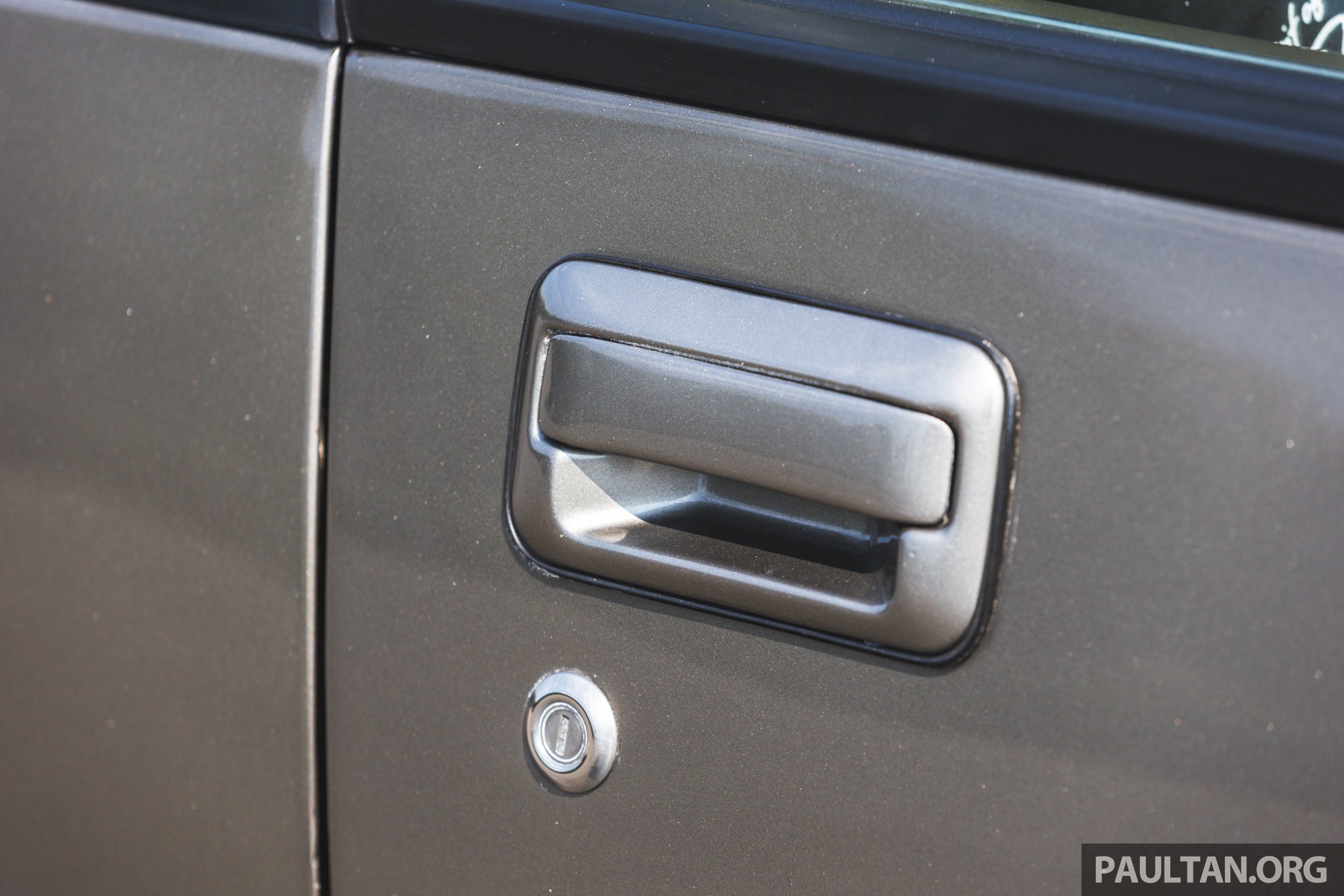
Restoration work on the Saga began with a full disassembly of its panels, and DSR purpose-built a dolly stand for the Saga’s bare shell not just for ease of movement within the workshop, but also to ensure that all areas of the shell can be easily accessed.
Nearly all body panels on this restored Saga are new – bonnet, bootlid, all four doors from the Saga LMST, roof as well as all glass panels are among the new components which replaced the originals on this car.
Restorative work was also carried out on the Saga’s stripped shell, which included an anti-corrosion treatment using products from Roberlo to ensure that the ‘bones’ of the car would continue to hold up against the test of time.

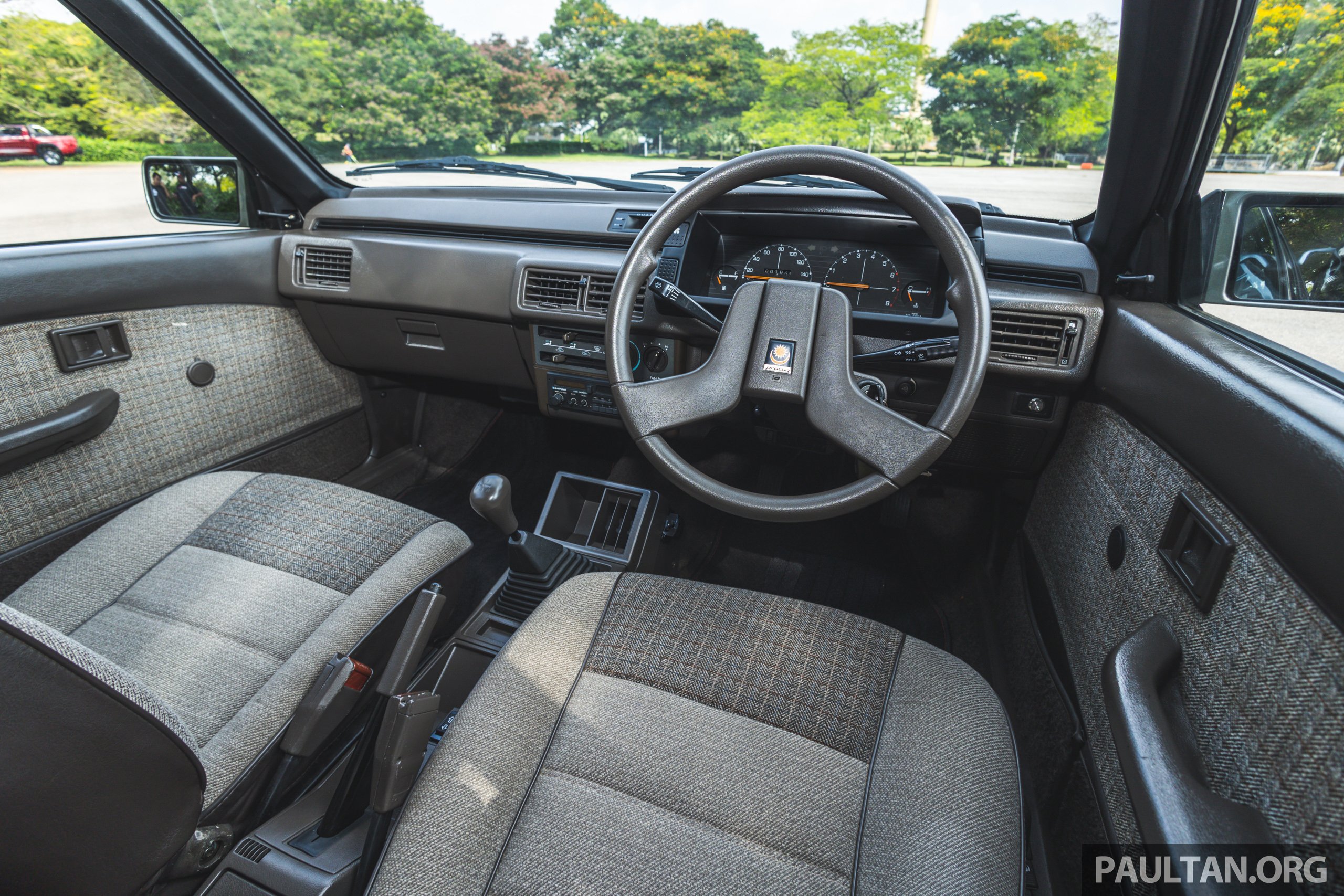
One request in particular for DSR by the owner of the Saga was to have a set of rear seat belts matching those in the front. Malaysian law requires all new cars from January 1, 1995 to be fitted with seat belts in the second row, and this Saga, being of its vintage, did not come with rear seat belts from the factory.
For installation of the rear seat belts, DSR did not merely drill holes in the car’s C-pillar, but instead the entire panel was cut out and replaced with a panel from the later Saga Iswara which came originally manufactured with screw points where the rear seat belts would be installed. Once the replacement panels were matched and reinstalled, the Saga was refinished in its original colour, Gerimis Grey.
On to the powertrain. While this Saga did not receive any upgrades for more power or torque, DSR nevertheless carried out the blueprinting process for its engine and gearbox to ensure that it would drive more smoothly once the car’s restoration work was complete. To that end, the 4G15 engine was removed from the car, then disassembled piece by piece.

The open-heart surgery found that the engine’s water jacket had been clogged by rust, and due to prolonged lockdowns because of the pandemic, its cylinder walls, crankshaft and connecting rod bearings had been scored.
For this reason the blueprinting process for this Saga’s engine also involved re-boring of cylinders, while its original pistons have been replaced with larger units to match the now-larger cylinder bores. According to DSR, all engine components which required replacement such as pistons, gasket kit, carburettor kit and the like were obtained from Japan.
Its gearbox has also been blueprinted, where its components were removed and inspected, while all ball bearings have been replaced by new units.
The powertrain was reinstalled into the Saga once its rebuild was completed. As we can see here, the Saga’s engine bay appears pristine; not only were the engine and gearbox now new and shiny, even the screws and other metal parts in the engine bay have been anodised, while other components such as the additional water tank, windscreen washer reservoir, radiator, fan and more have been replaced with new examples.
One may have also noticed that the specifications plates in the engine bay appear brand-new; this is because all of these have been redesigned and reprinted, and DSR has taken the opportunity to update these with current information, such as brake fluid that is now DOT 4 rather than the DOT 3 of the original car, as well as the specification of engine oil it currently uses.
In addition to those specification plates, the anti-rust and tyre pressure specifications, minimum RON number on the inside of the fuel flaps as well as the symbols on the front seat adjustment levers also received the same treatment.

During this photography session in Putrajaya, our paultan.org colleague Farid got the chance to take the wheel of this restored Saga, and he reported that this example was the best of any first-generation model that he has ever driven. With the blueprinting that has been applied to the engine, very minimal vibration was felt, even when operating at low speeds in a higher gear.
Even the iconic trait of the Megavalve engine that is a knocking sound when the vehicle is driven up inclines, is notably absent on this particular first-generation Saga. In fact, since its restoration process was completed, this Saga has never been fuelled with RON95 petrol, instead always receiving the RON97 option.
For its chassis, the Saga has received a rebuilt suspension set, where all rubber bushes, joints as well as arms have been replaced. Its rear torsion beam assembly has been taken apart and had its worn components replaced, too, subsequently getting a fresh coat of paint for a brand-new look.
While the dampers on this Saga appear to be factory standard, they have in fact received an expert’s touch courtesy of former Proton R3 ride and handling maestro Faidzil Alang, now of Fawster Motorsport. The standard, unassisted steering assembly now gives way to a new rack with hydraulic assistance.
The factory-standard look continues throughout the vehicle’s exterior, save for the side mirrors which have come from the original Proton Saga’s Japanese twin, the Mitsubishi Lancer Fiore. Some components which can no longer be found new due to its design’s age, have been restored by DSR to the extent of looking nearly brand-new, such as the Proton logo on the front fascia which now illuminates again, as its original design intended.
A similar level of attention was paid to the covers for all four of the Saga’s steel wheels, which also could no longer be purchased new. Used sets were therefore the way, and those which have been warped over the years of use would then have to be heated to be malleable enough to straighten out, and subsequently these were resprayed in silver paint. Meanwhile, the ‘Proton’ script in the typeface of the car’s contemporary has been re-applied to the wheel covers by airbrush.
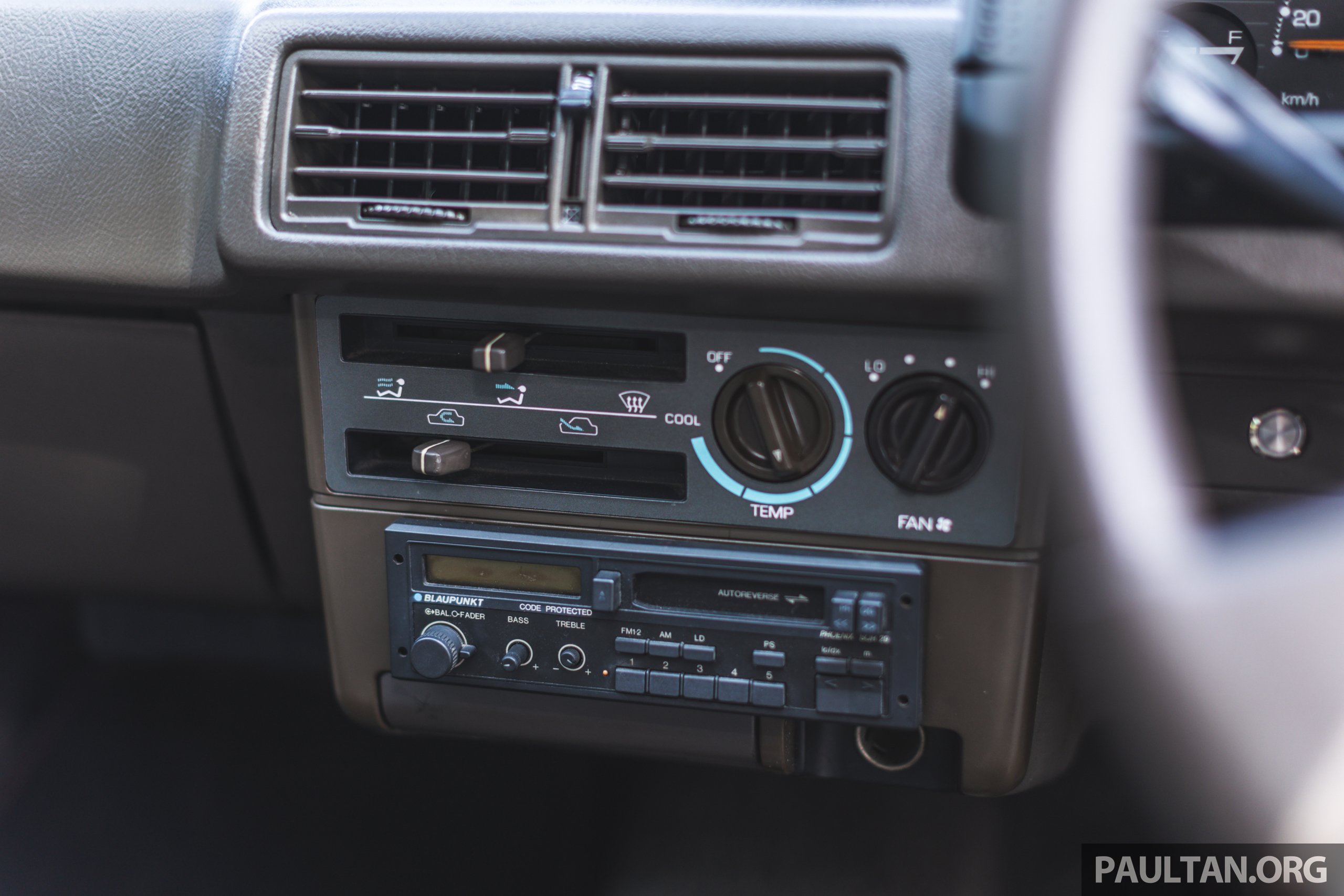
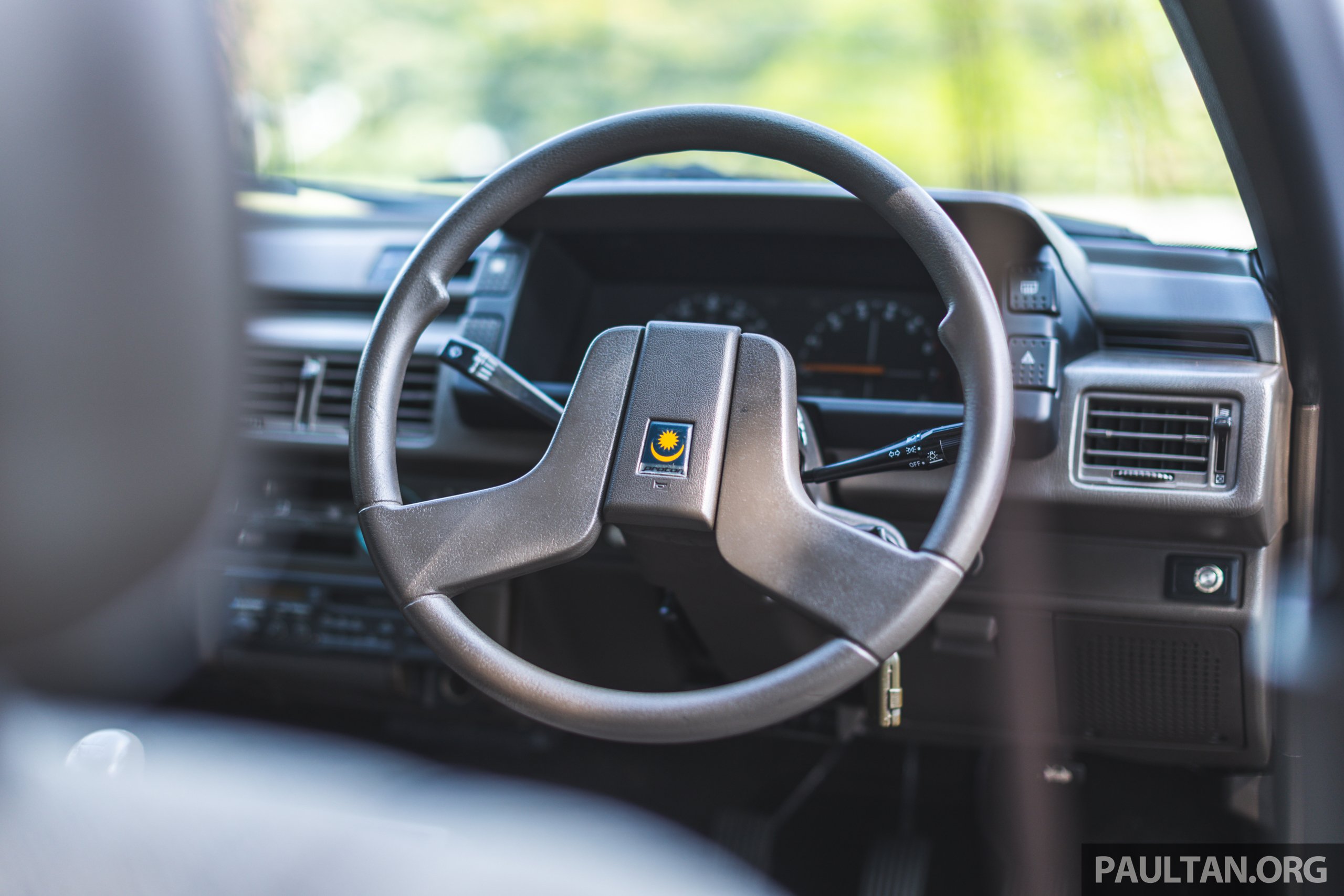

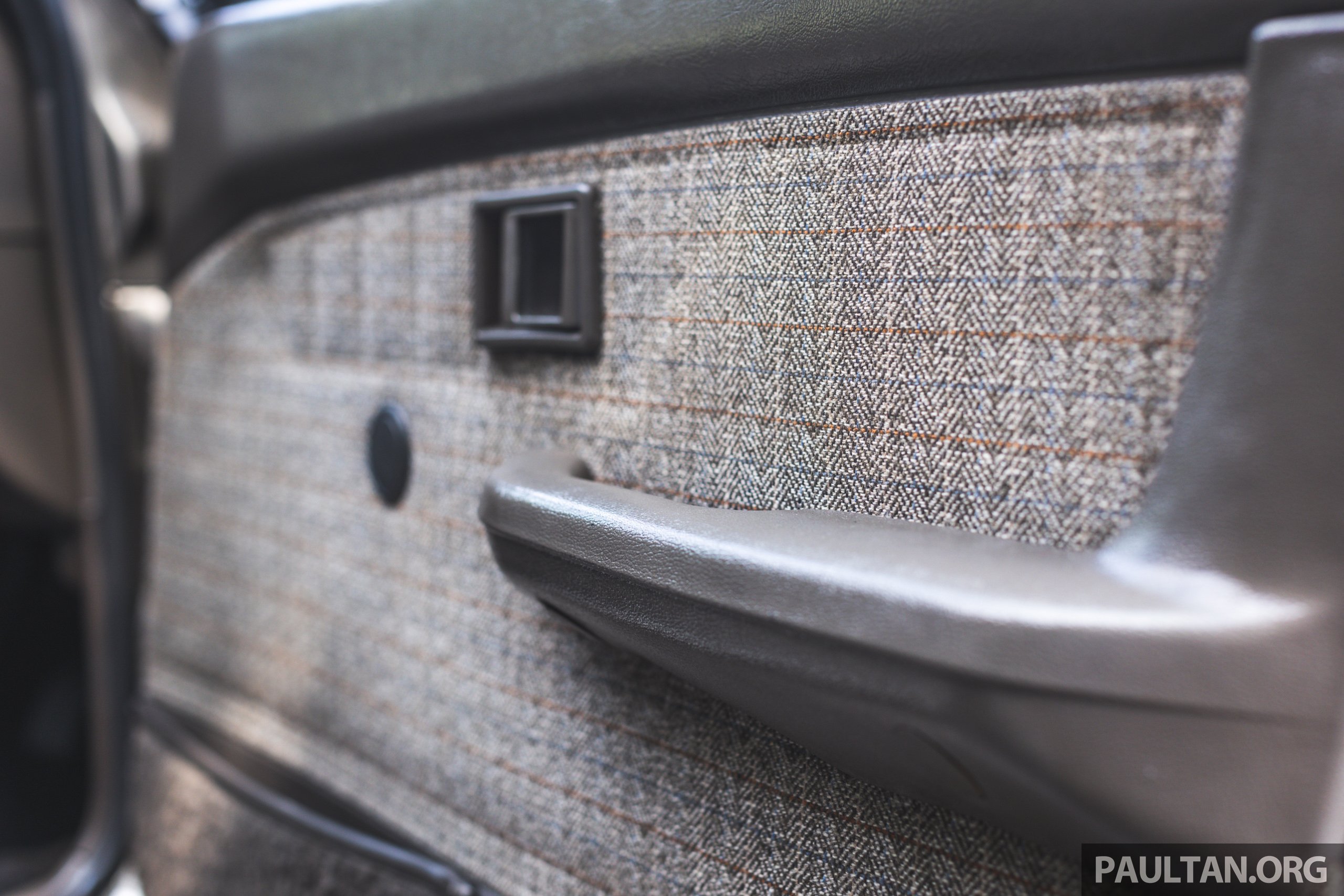
Restorative works continued into the cabin. As seen in the images here, the dashboard, door cards, steering wheel, instrument panel, and switchgear have all been cleaned and restored to look as though it has been curated for a museum collection.
Up top, a more modern material serves as upholstery for the roof liner and is now black in colour. Interestingly, all seats in this Saga have been under accessory covers which were fitted since the car was new, and its condition has been preserved to the present day.
Therefore, in addition to saving the time and money that would otherwise have been spent on restoring these seats, the accessory seat covers of the past have also retained the husk aroma from the seat cushions within, which was the same as when the Saga was originally rolled out of showrooms, Farid recalls.
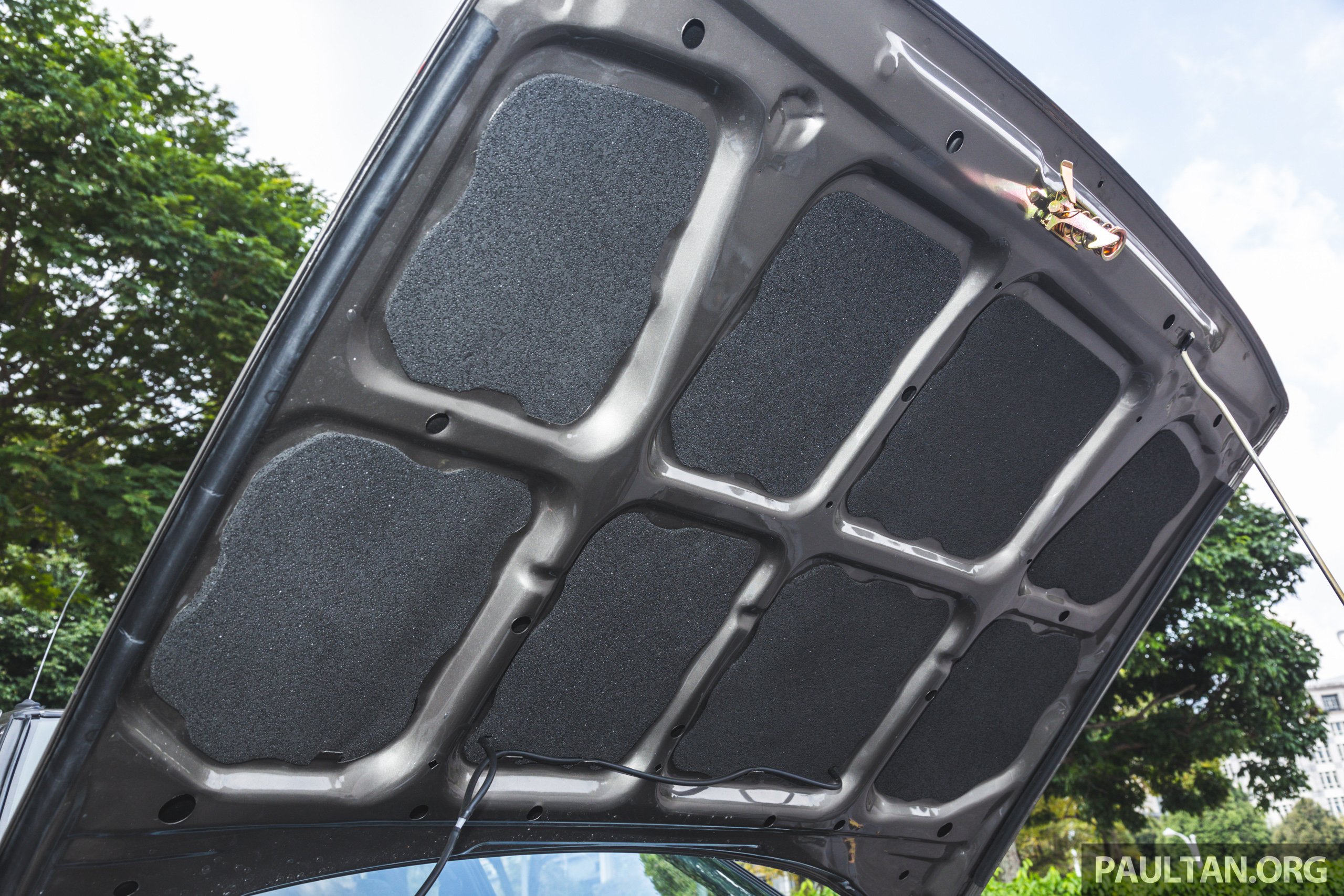
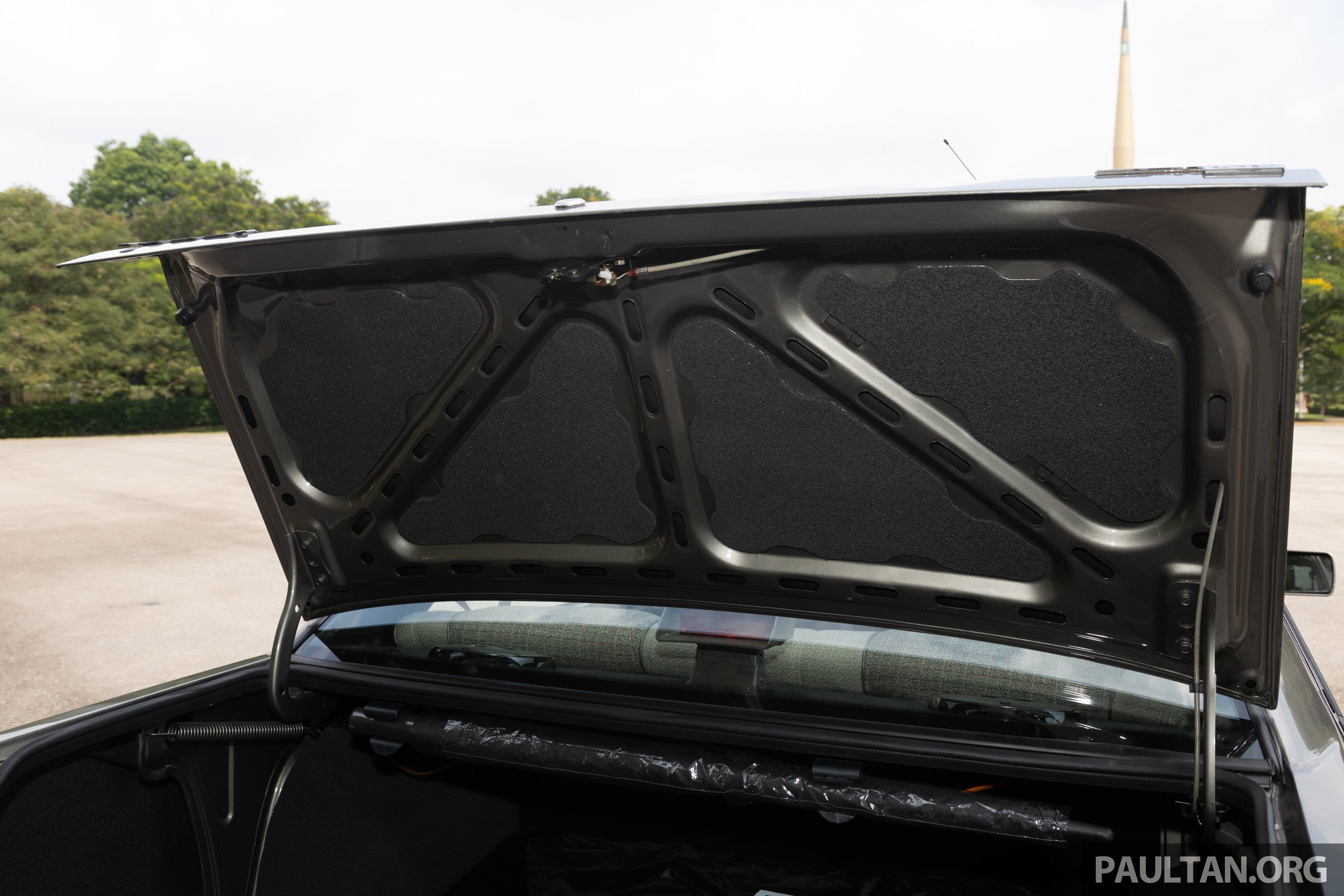


The factors of noise, vibrations and harshness (NVH) have been given great consideration by DSR in the restoration of this Saga, which is why its bodyshell has actually been installed with insulating material in the floor, in the roof and throughout the length of the car. This insulation has also been installed on the engine hood and the bootlid.
With the labour that has gone into eliminating undesirable sounds, DSR has endeavoured to amplify the more desirable ones, too. The original Blaupunkt Phoenix cassette player in the dashboard of this Saga has also been restored to look and function as new.
If that wasn’t enough, another, more modern head unit from Kenwood has been concealed in the glovebox to enable to playback of a variety of media from connections such as USB, Bluetooth and more. Both of these head units have been connected to a sound processor to get an even more improved sound, and the driver can switch between the classic Blaupunkt player and the Kenwood unit simply by using a smartphone application.

The resulting audio is output through four Infiniti Kappa loudspeakers from Harman, which are supported by a Harman subwoofer that is located beneath the front seat. Don’t be fooled by this Saga’s ostensibly unmodified look; the audio quality is better than some cars with huge subwoofer enclosures occupying valuable space in a car’s luggage compartment.
According to DSR co-founder Suriya Sankaran, the restoration process for this Saga has been among the most challenging and time-consuming projects undertaken by the firm, due to challenges in acquiring parts which are truly genuine, and other factors.
Having commenced in February 2022 and completed in June this year, a period of nearly a year and a half was elapsed in the course of this project. In the period of time it took to complete this one Saga, DSR has managed to complete the works on two full Proton Satria GTI restoration projects, Suriya noted.







